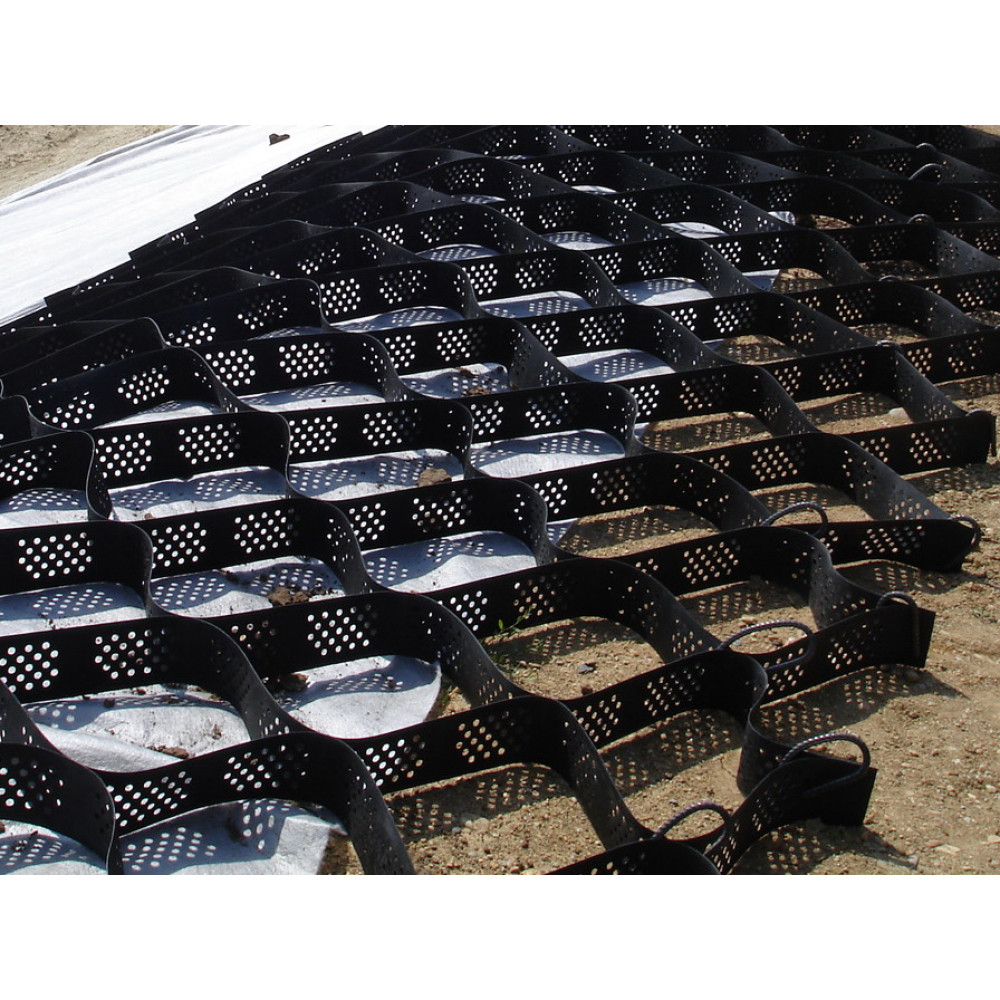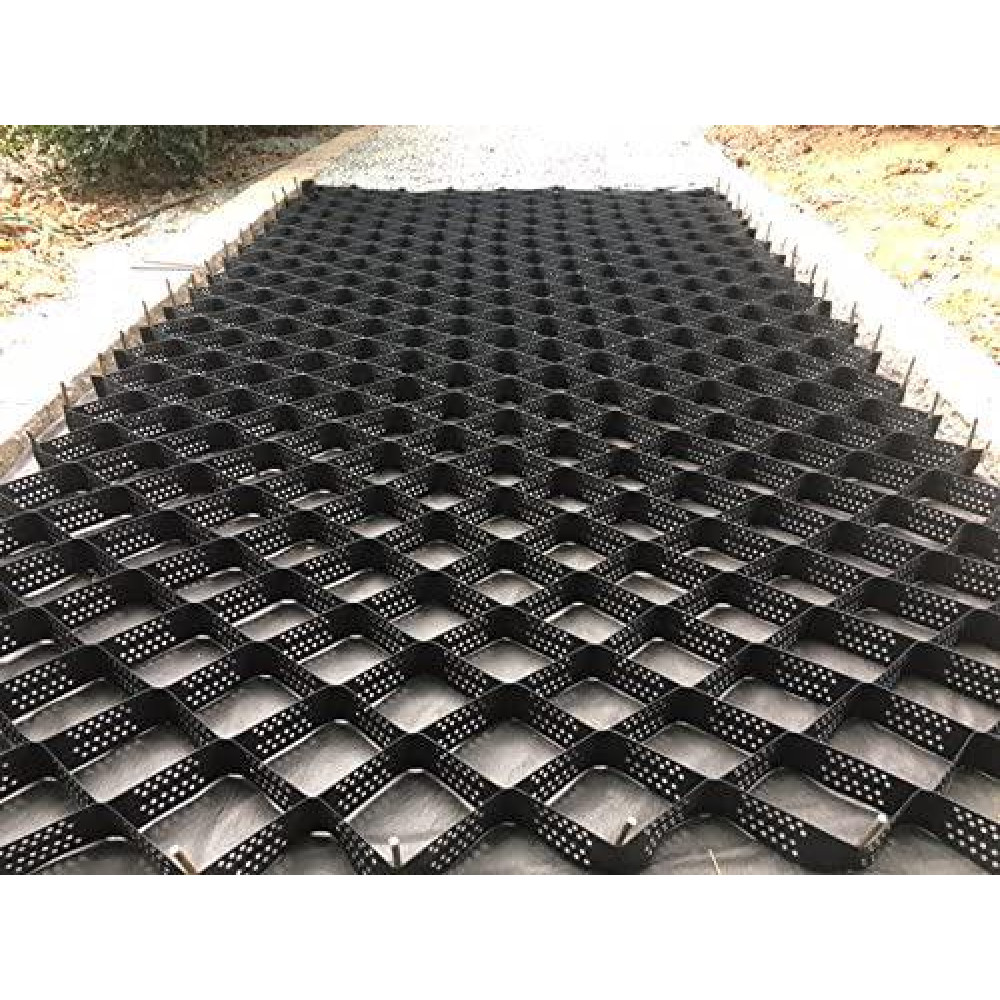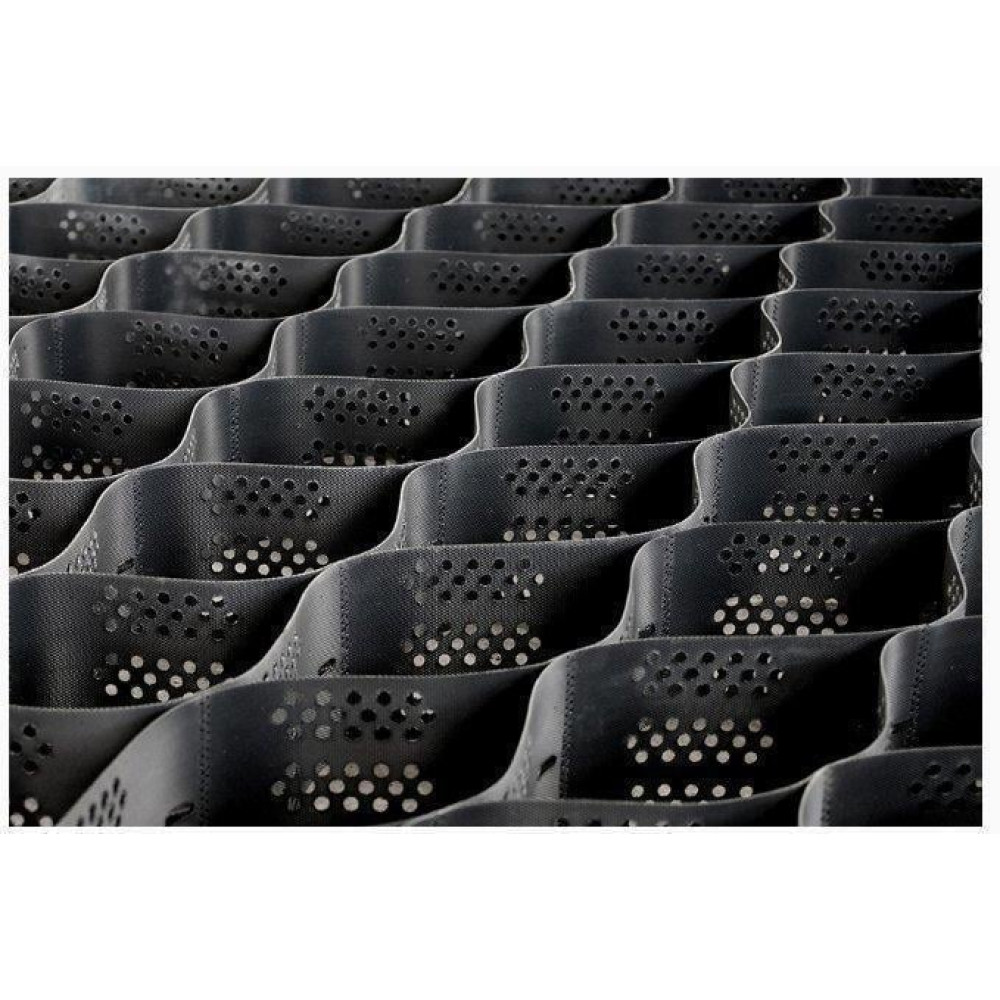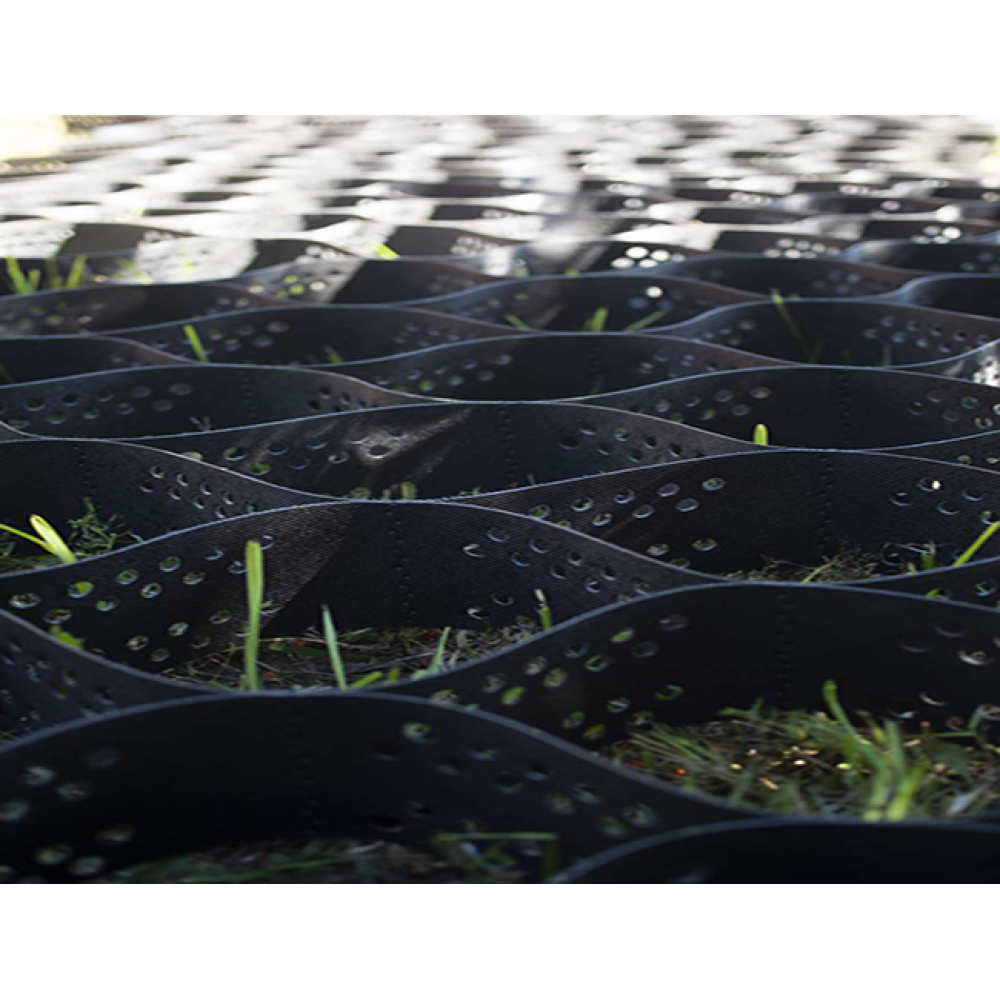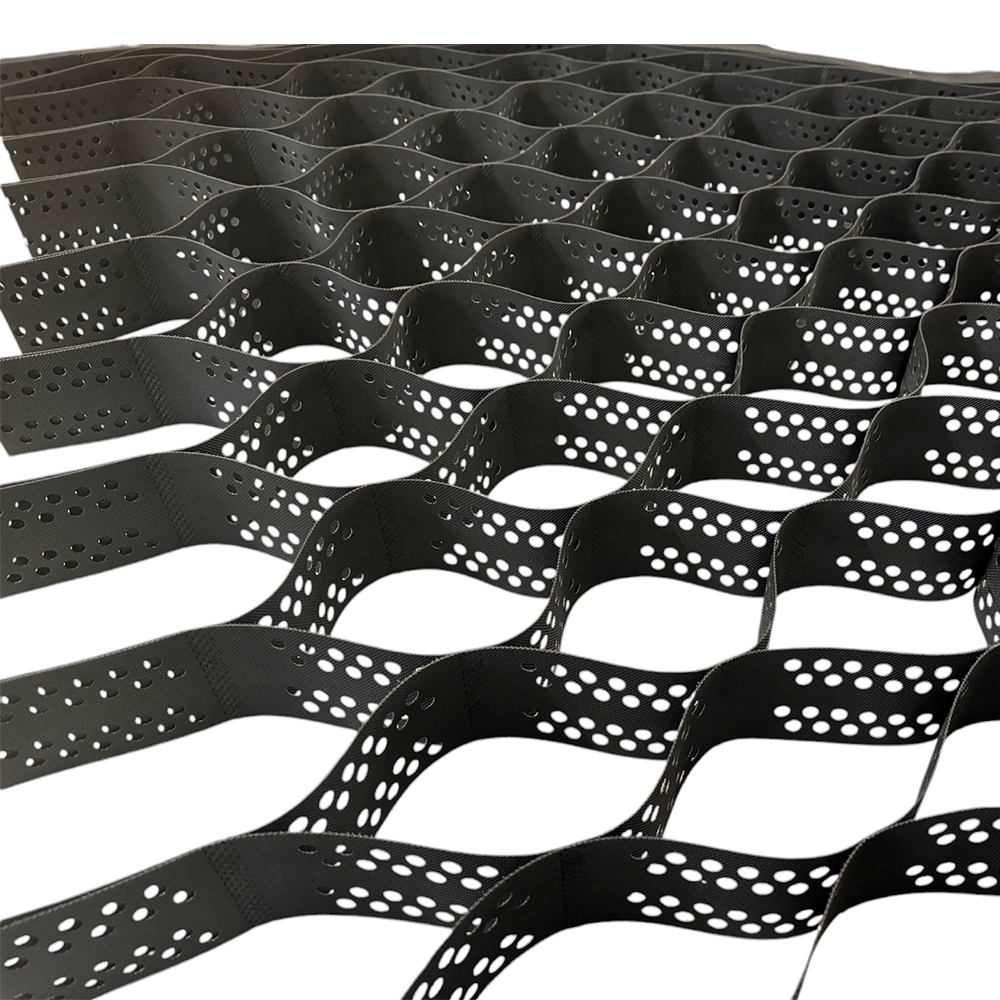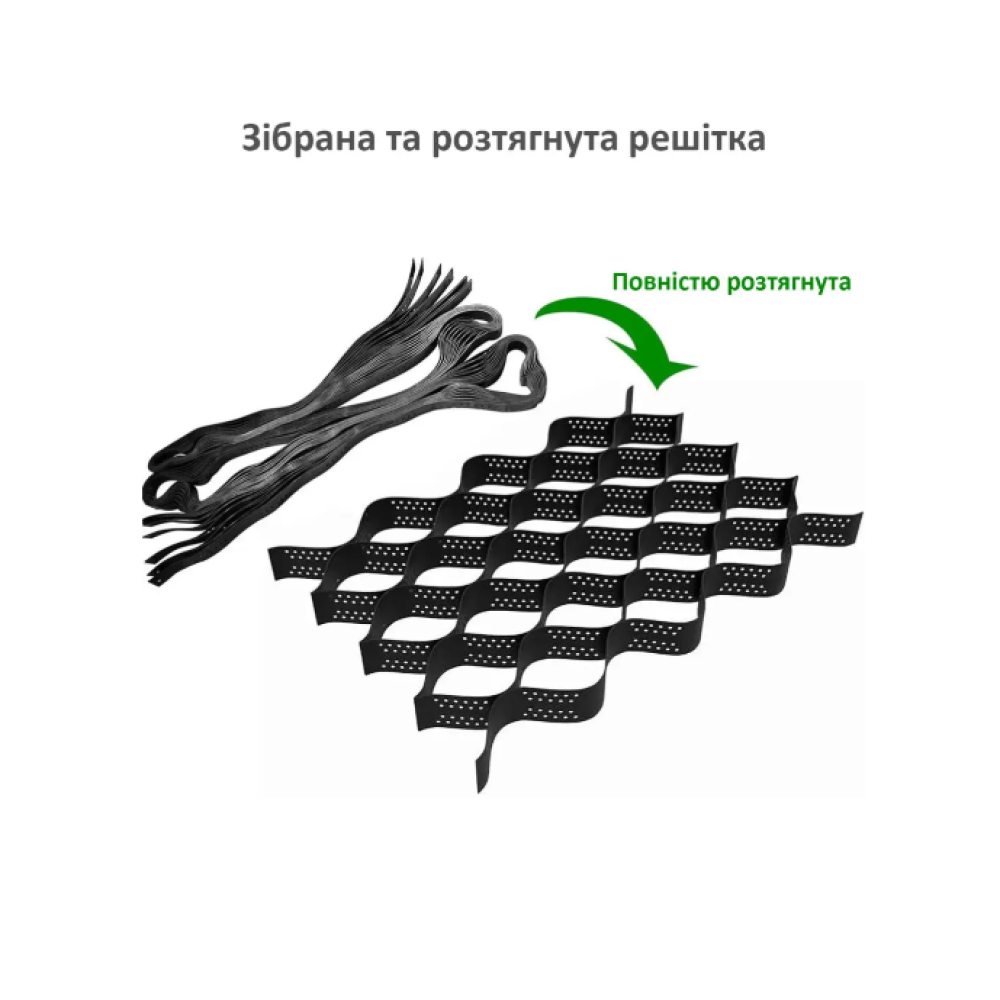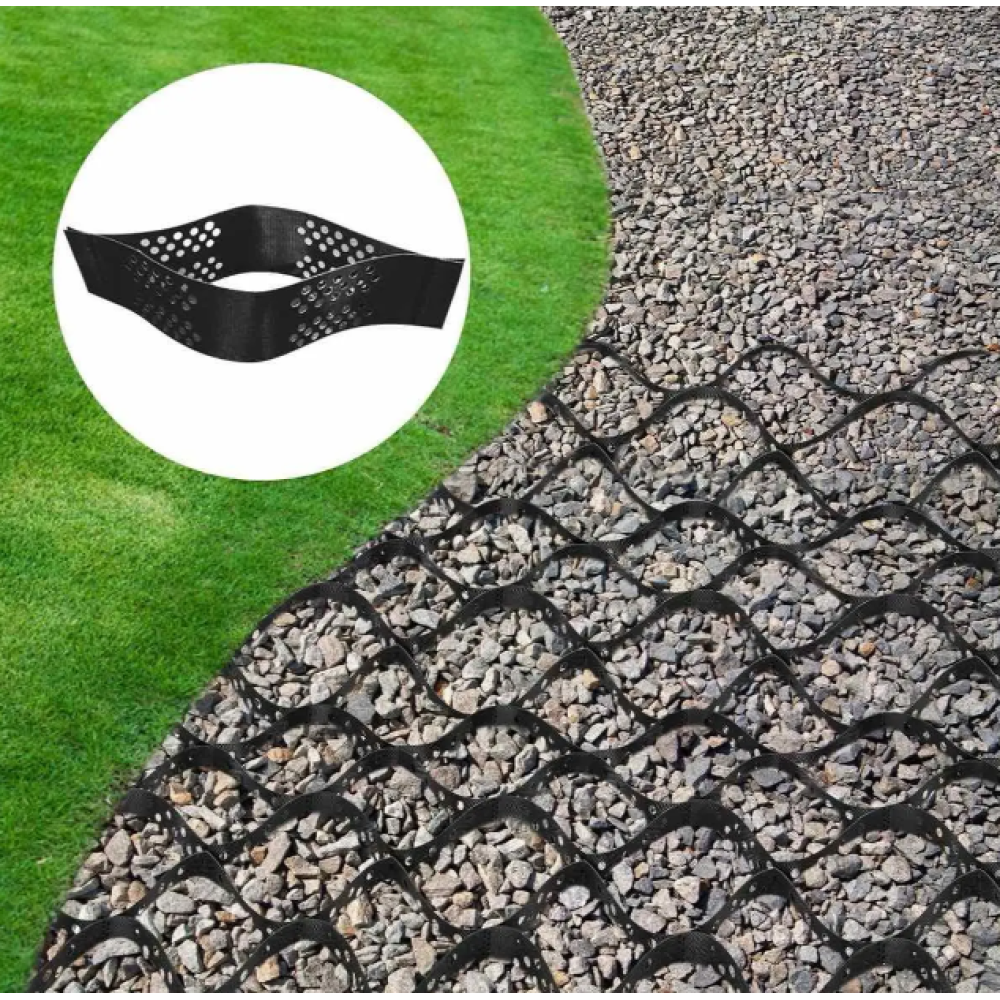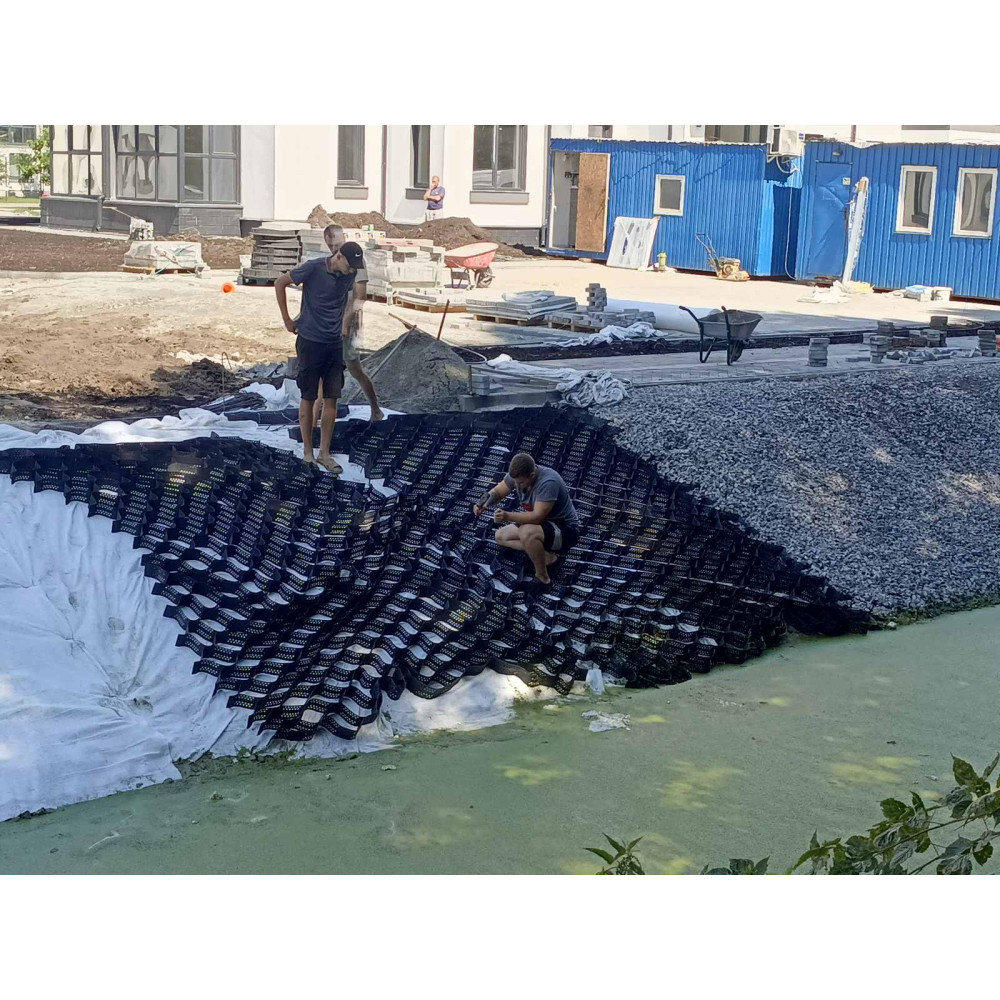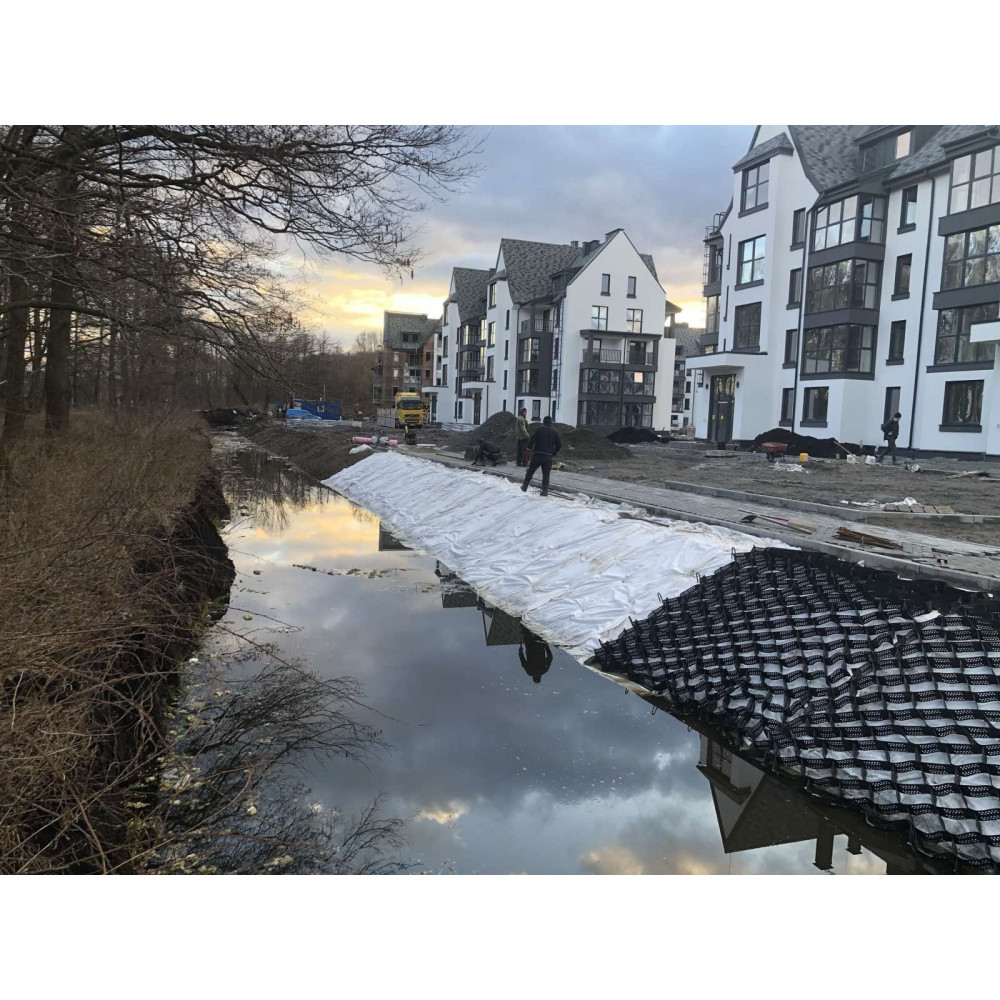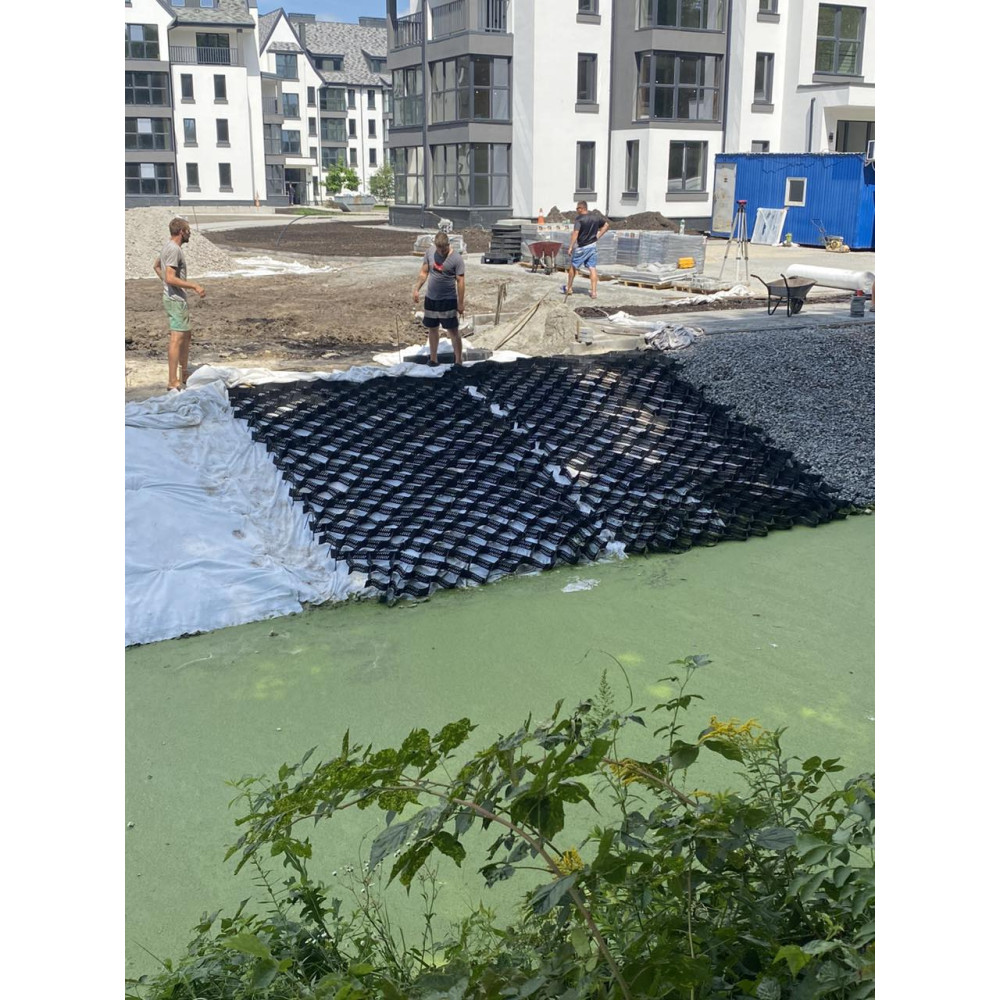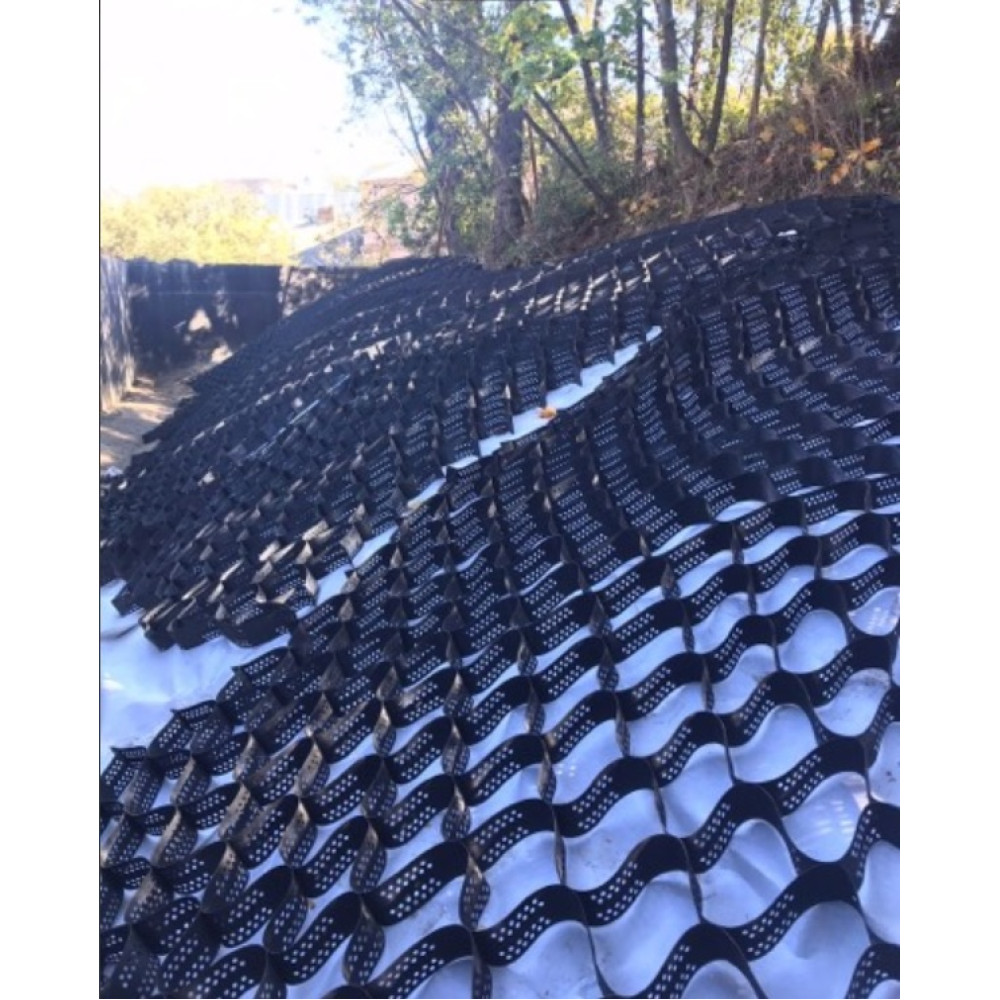Volumetric geogrid UGS-30, perforated, height-20cm, size 20x20cm

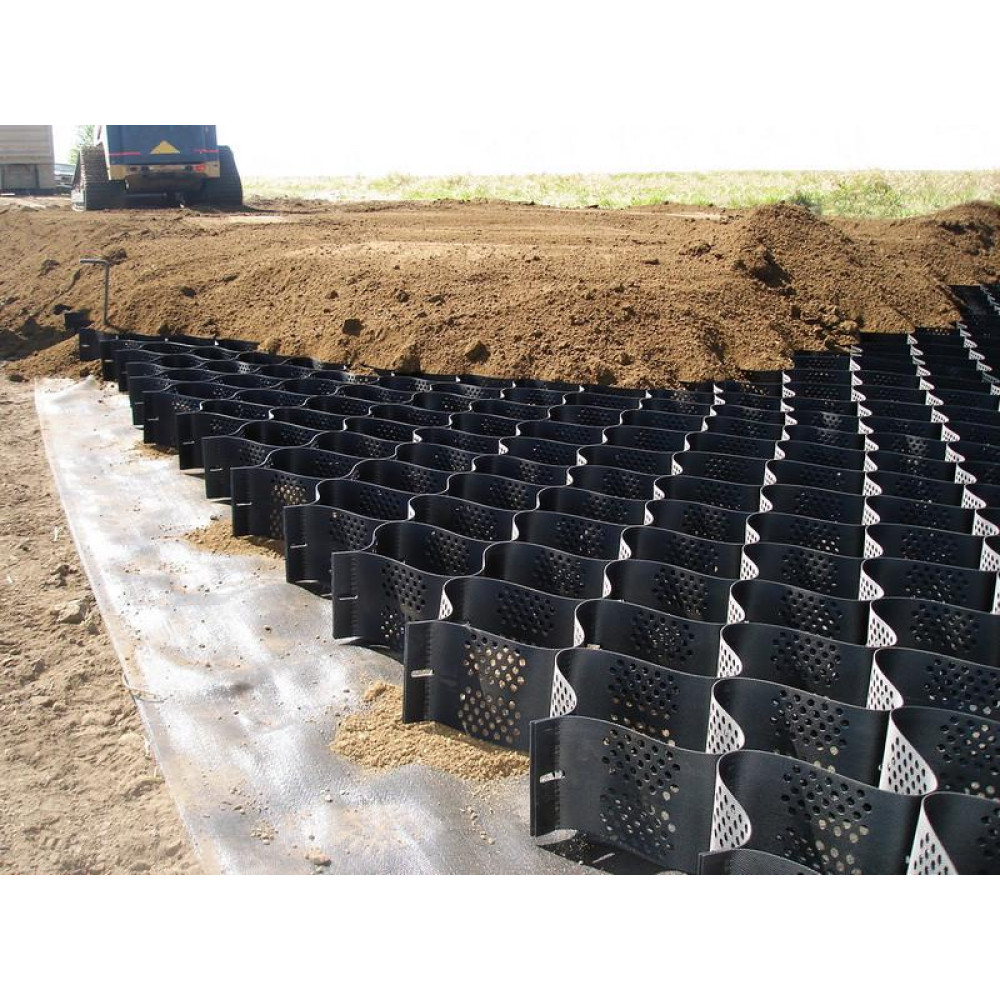
A volumetric geogrid is a spatial reinforcing material consisting of polymer strips up to 2 mm thick, which are interconnected in a staggered pattern using high-strength welding. After stretching, the structure forms a three-dimensional cellular grid that maintains stability in the horizontal and vertical planes under load.
Made from flexible yet strong high-density polyethylene (HDPE), the geogrid is able to adapt to complex terrain and is securely fixed on uneven areas, slopes, embankments and other areas with an increased risk of erosion or subsidence.
The flexible structure of the geogrid sections allows it to adapt to the micro-relief of the area. This is especially important when strengthening slopes, as the material can closely follow the shape of the slope, strengthen its base and at the same time form drainage channels.
The use of a volumetric geogrid significantly increases soil resistance to erosion, effectively prevents landslides, collapses and other surface deformations, providing reliable protection even in difficult geological conditions.
Advantages of use:
• uniform distribution of load on the base;
• high resistance to moisture, frost and ultraviolet radiation;
• reduction of costs for base preparation and inert materials;
• durability and preservation of operational characteristics for decades.
The main areas of use of volumetric geogrids:
• stabilization and reinforcement of soils in transport construction and other engineering facilities;
• protection and strengthening of coastlines, canals and small watercourses;
• anti-erosion stabilization of slopes, embankments and embankments, including steep sections;
• increasing the stability of foundations for roads, parking lots, industrial sites and areas along main communications;
• formation of supporting structures and landscape design elements.
A volumetric geogrid embedded in the base of the road surface creates a spatial semi-rigid structure that evenly distributes the load over the entire area and prevents the gravel or crushed stone layer from spreading to the sides. This significantly increases the strength and durability of the road surface.
Geotextiles and other geosynthetic materials are often used in conjunction with geogrids. This combination provides a lightweight, yet strong and wear-resistant base for the construction of roads, parking lots, platforms, and other engineering structures.
Available sizes of volumetric geogrid to order:
| Diagonal of the geogrid cell, cm | Geogrid cell size, cm | Cell width along the edge, cm | Module size, m | Module area, sq. m. | |||
| 05 | 10 | 15 | 20 | ||||
| 20 | 20/05 | 20/10 | 20/15 | 20/20 | 16x16 | 3x4 | 12 |
| 30 | 30/05 | 30/10 | 30/15 | 30/20 | 21x21 | 3x5 | 15 |
| 40 | 40/05 | 40/10 | 40/15 | 40/20 | 33x33 | 2.43x8.23 | 20 |
The height of the volumetric geogrid is selected taking into account specific tasks and the angle of inclination of the surface.
Indicative recommendations:
• Road construction – wall height from 10 cm and more.
• Slopes with a slope of 10–20° – a height of 5 cm is sufficient.
• Slopes with a slope of 20–40° – optimal height is 10 cm.
• Slopes with a slope of 40–50° – a height of 15 cm is recommended.
• Slopes with a slope of more than 50° – use a height of 20 cm or more.
Technical characteristics of volumetric geogrids:
| Name of indicators | Value | Control method |
| Appearance | Honeycomb construction of perforated strips, welded in a staggered pattern. No breaks, delaminations or foreign inclusions | visually |
| Thickness, mm | 1.5 | 6.2 |
| Mass per unit area, g/cm 2 | 1400 | GOST 6943.16 |
| Ultimate tensile strength, kN/m, not less than: along across |
27.54 29.20 |
GOST 15902.3 (GOST 11262) |
| Elongation at break, %, not more than along across |
17.4 13.28 |
GOST 6943.10 |
| Weld tear strength, kN/m, not less | 24.32 | GOST 15902.3 |
| Melting point °C, not less | 170 | GOST 21553 |
There are no reviews for this product.
There are no reviews for this product, be the first to leave your review.
.svg)












